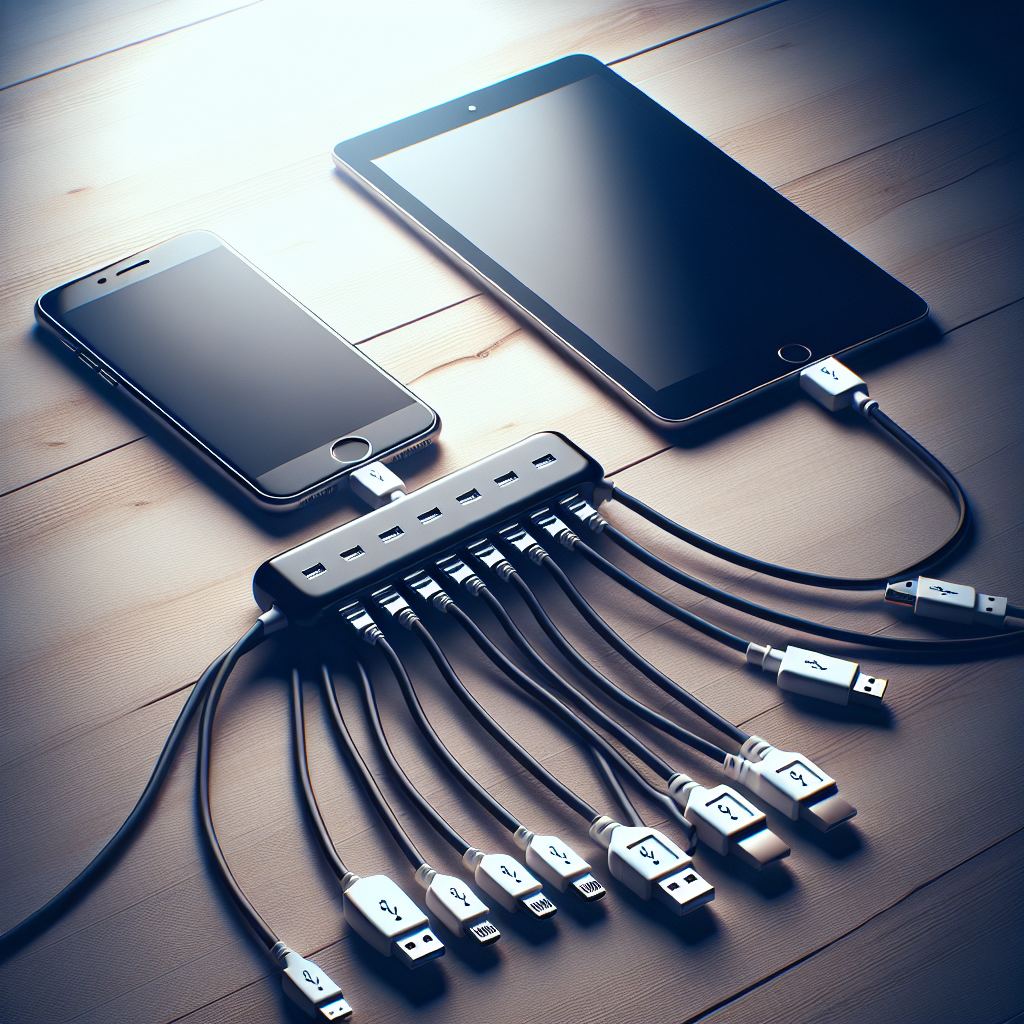
Can a USB Splitter Be Used to Charge Devices Like Phones and Tablets?
Introduction
In our increasingly connected world, charging multiple devices at once can be a necessity. Whether it’s for convenience, travel, or simply to avoid clutter and maximize space, many people turn to USB splitters. But can a USB splitter be effectively used to charge devices like phones and tablets? In this article, we will explore the functionality, advantages, limitations, and best practices of using USB splitters for charging purposes.
| Aspect | Details |
|---|---|
| Functionality | Allows multiple devices to share a single USB power source. |
| Charging Capability | Varies based on power output of the splitter. |
| Device Compatibility | Generally compatible with most USB-powered devices. |
| Limitations | Not all splitters support data transfer; may reduce charging speed. |
| Best Use Cases | Home, office, or travel when needing to charge multiple devices. |
What is a USB Splitter?
A USB splitter, also known as a USB hub, is a device that allows you to connect multiple USB devices through a single USB port on a host device. While most USB splitters are designed for data transfer, some models can facilitate charging. Understanding the type of USB splitter you are using is essential for ensuring it meets your charging needs.
Types of USB Splitters
USB splitters come in various types, generally categorized based on their functionality:
- Power Splitters: Designed primarily to distribute power among multiple devices.
- Data Splitters: Focus on connecting multiple devices for data transfer, but might not support simultaneous charging.
- Power/Data Combination: Capable of both charging and data transfer, these are often the best choice for users who want versatility.
How USB Splitters Work
The core function of a USB splitter is to take power from a single source and divide it among multiple outputs. Each output supplies power to the connected devices, but the amount of power each device receives can vary. This is particularly important when charging devices like phones and tablets that have different power requirements.
Power Distribution
The charging capability of a USB splitter depends on its design:
- Voltage: Standard USB ports provide 5V of power, which is sufficient for most low-power devices. However, some chargers use higher voltages for fast charging, and the splitter must support these voltages.
- Current Rating: USB splitters come with current ratings, typically expressed in amperes (A). Most phones and tablets require at least 1-2A to charge effectively. If a splitter can provide only 0.5A per port, charging devices could be slow or ineffective.
Can USB Splitters Charge Devices Like Phones and Tablets?
Yes, USB splitters can charge devices like phones and tablets. However, there are several key factors to consider:
1. Splitter Power Output
The effectiveness of charging will largely depend on the USB splitter’s power output. A USB splitter is only as good as the maximum amperage it can supply. If a splitter is too weak, connected devices may not charge efficiently.
2. Device Requirements
Diverse devices have varied power requirements. A standard smartphone typically demands around 1A, while tablets may need 2-3A or more, especially if they are fast-charging. Confirm the total power supplied by the splitter can meet the combined needs of all connected devices.
3. Quality of the Splitter
Higher quality splitters come with built-in protections against overcurrent or short circuits, ensuring the safety of both the splitter and connected devices. Always choose a USB splitter from reputable brands.
4. Use of Charging Ports
Some splitters come with dedicated charging ports that prioritize power delivery over data transfer. These ports can significantly improve charging efficiency when compared to data-specific ports.
Advantages of Using USB Splitters for Charging
- Convenience: Charge multiple devices simultaneously without needing several outlets.
- Cost-Effective: A single USB splitter can replace multiple chargers, reducing clutter and costs.
- Portability: Ideal for travel; a USB splitter takes up minimal space in a bag.
- Versatility: Many splitters provide both charging and data transfer capabilities.
Limitations of USB Splitters for Charging
- Reduced Charging Speed: Depending on how many devices are connected, the charging speed can diminish.
- Compatibility Issues: Not all splitters support the fast-charging features of certain devices.
- Potential Overload: Connecting too many high-draw devices can trip the overload protection.
Best Practices for Using USB Splitters for Charging
To ensure you’re getting the best results when charging devices via USB splitters, consider the following tips:
1. Check Specifications
Always check the specifications of both your USB splitter and the devices you intend to charge. Ensure that the output ratings are compatible.
2. Choose Quality Products
Purchase USB splitters from well-known brands that are certified for safety and quality. Avoid cheap, unbranded products that may have lower performance.
3. Limit the Number of Devices
To optimize charging performance, limit the number of devices connected to the splitter to reduce overall power drain.
4. Monitor Charging Times
Keep an eye on devices while charging—if they are heating up or charging slower than expected, reconsider how you are using the splitter.
Conclusion
USB splitters can be a practical solution for charging multiple devices, provided you select a quality product with adequate power output. By understanding their capabilities and limitations, you can leverage USB splitters to keep your devices powered up efficiently. Consider the specific needs of your devices and choose your splitter accordingly, and you can manage your charging needs effectively and conveniently.
